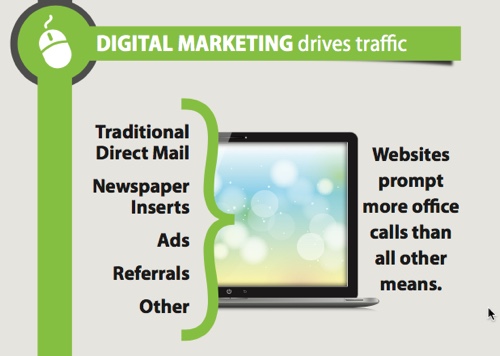Join Us As We Uncover The Groundbreaking Fads In Dyslexia Therapy That Might Change Lives In The Next Five Years And Beyond
Join Us As We Uncover The Groundbreaking Fads In Dyslexia Therapy That Might Change Lives In The Next Five Years And Beyond
Blog Article
Material Composed By-MacKinnon Mouritsen
While typical approaches of dyslexia therapy have focused mostly on cognitive skills, emerging trends suggest a change towards even more all natural techniques that focus on psychological well-being. You may discover it interesting exactly how innovations in AI are readied to personalize finding out experiences, making education extra easily accessible and effective. As neuroscience remains to introduce the intricacies of dyslexia, brand-new interventions can redefine exactly how we approach this problem. The next 5 years promise to bring amazing advancements-- are you prepared to discover what these modifications could mean for individuals dealing with dyslexia?
Breakthroughs in Technology
Breakthroughs in modern technology are revolutionizing dyslexia therapy, offering new hope for pupils and grownups alike. As you discover these innovations, you'll find a series of tools designed to make analysis and finding out more obtainable.
As an example, apps that make use of speech-to-text and text-to-speech functionalities can help you get rid of reviewing obstacles in real-time, enabling you to involve with message in such a way that fits your needs.
Interactive software application often customize discovering experiences, adapting to your rate and style. These programs supply customized exercises that focus on details difficulties you may face, making method less overwhelming and more efficient.
Additionally, developments in artificial intelligence are enhancing these devices, enabling smarter, much more instinctive user interfaces that guide you as you advance.
You can also gain from on-line areas that share vital resources and support. Digital tutoring services attach you with skilled professionals that understand your unique difficulties, supplying advice and inspiration from the convenience of your home.
Eventually, these technological improvements aren't simply devices; they're transformative sources that encourage you to navigate dyslexia with self-confidence and strength.
Neuroscience Insights
Recognizing the mind's mechanics uses useful understandings into dyslexia therapy. Recent research highlights just how the mind processes language, revealing the one-of-a-kind neural pathways that dyslexic individuals use. These understandings can help customize interventions that target details mind features and enhance analysis skills.
For example, research studies making use of neuroimaging strategies reveal that dyslexic brains might rely much more on aesthetic processing instead of the acoustic processing common in well-versed visitors. This shows that including visual discovering strategies can improve comprehension. You could take into consideration programs that take advantage of this understanding, utilizing devices like visuals coordinators or aesthetic help to reinforce discovering.
Additionally, neuroscience reveals the value of mind plasticity. Your brain can adapt and rearrange itself, which suggests that targeted exercises can foster brand-new links with time. Engaging in activities that promote phonological understanding and phonemic decoding can cause measurable renovations.
In addition, understanding the psychological and cognitive facets of dyslexia can likewise guide therapy. When https://dyslexia-friendly-fonts06048.liberty-blog.com/32940258/helpful-approaches-for-parents-navigating-their-child-s-dyslexia-journey-can-cause-remarkable-development attend to anxiety and inspiration together with reading abilities, you create a holistic strategy that cultivates long-term adjustment.
Welcoming these neuroscience understandings can equip you to select more effective strategies for dyslexia therapy in the coming years.
Personalized Knowing Approaches
Customizing finding out experiences to specific needs can considerably improve the efficiency of dyslexia therapy. Personalized learning strategies focus on your one-of-a-kind strengths and difficulties, allowing for strategies that resonate with you. Instead of making use of a one-size-fits-all technique, these methods adjust to your discovering style, speed, and preferences.
You could engage with specialized software program that targets particular abilities, such as phonemic recognition or analysis fluency. This modern technology commonly consists of interactive elements that keep you motivated and focused.
Furthermore, you'll take advantage of personalized lesson strategies made by teachers who recognize your specific demands, guaranteeing that you're not simply proceeding, but prospering.
In addition, normal analyses assist recognize areas where you stand out and where you could need extra assistance. https://www.dailymail.co.uk/tvshowbiz/article-14219763/Robbie-Williams-resit-GCSEs-stupid-Dyslexia-ADHD.html allows both you and your educators to change techniques as required.
As we relocate into the following 5 years, you can expect much more innovative customized learning devices, potentially powered by artificial intelligence, that will certainly additionally fine-tune your educational experience.
With these targeted approaches, you'll find yourself more involved, confident, and equipped to get rid of the obstacles of dyslexia.
Conclusion
As you look in advance, the future of dyslexia therapy is brilliant and promising. Did you recognize that customized discovering can enhance academic performance by as much as 30% for pupils with dyslexia? By embracing innovative modern technologies and all natural approaches, you'll see customized interventions and improved emotional support coming to be the standard. As research study remains to introduce brand-new understandings, you'll locate that more inclusive and effective sources will encourage people with dyslexia to flourish in their knowing trips.
